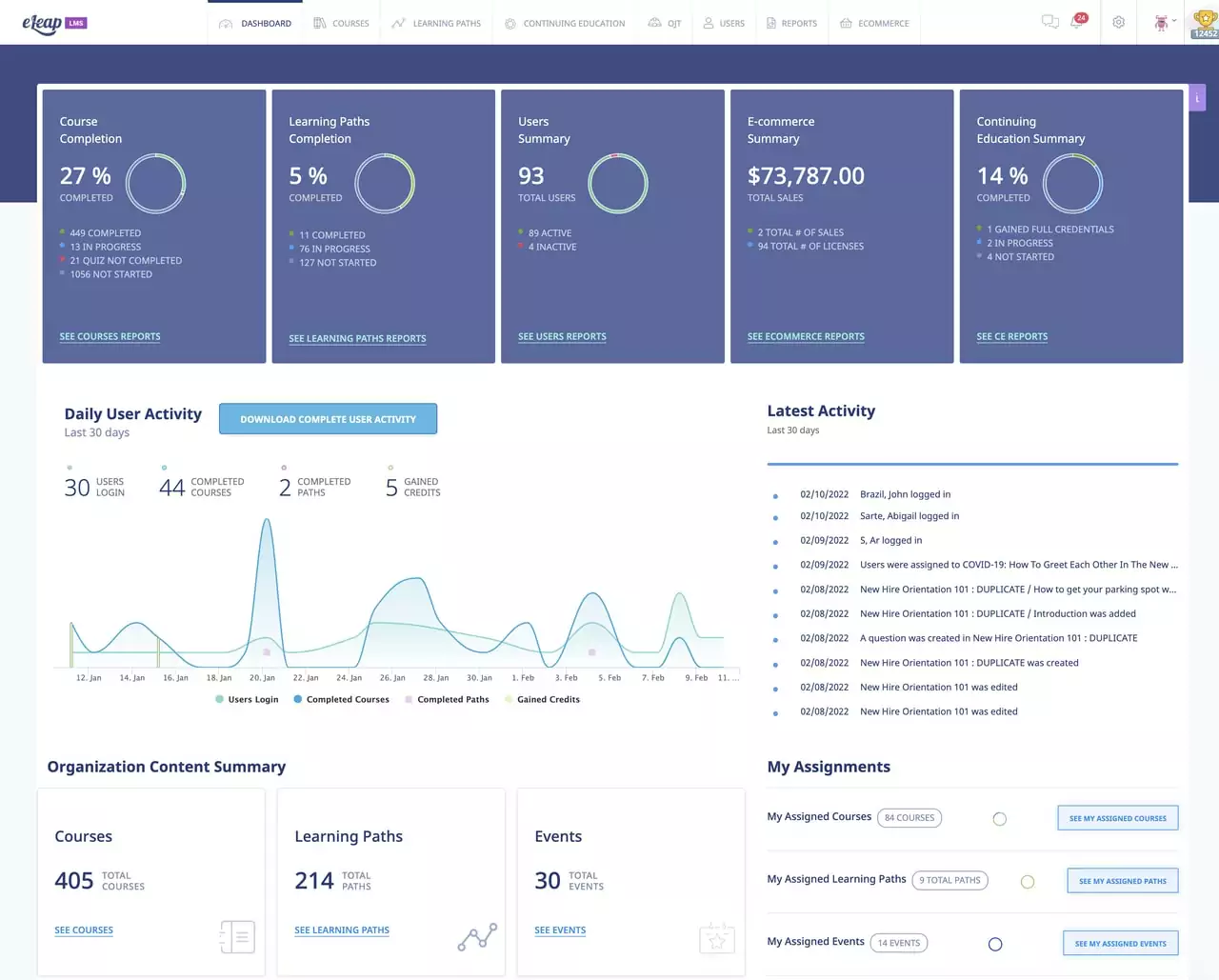Leveraging LMS Reporting for Better eLearning Results

Just about every learning management system (LMS) includes a reporting function. In the early days, LMS reports were mostly focused on participation and completion rates. Companies wanted to know if their learners were taking the courses and completing them. But LMS reporting has come a long way since then. Depending on the robustness of the report options in your LMS, you could be leveraging LMS reports to get better eLearning results.

The Basics of LMS Reports
Any LMS is going to provide reports about completion rates for each module or course your company offers. If completion rates are low, you’ll want to dig deeper to find out why. It might be that your eLearning content is not very good and learners are abandoning ship because the material is simply subpar. This can be easily revealed if you take a look at course feedback. But if learners don’t have the opportunity to give feedback until they’ve completed the course, then you might not be seeing the full picture of what’s driving low completion rates. If the course is composed of multiple sections or modules, build in required learner feedback about the material after each module. This could offer a better view of what’s really happening. This learner feedback is also your source data for identifying opportunities to improve your content in ways that will increase completion rates.
Besides completion rates, LMS reports can also provide other views into important data around participation. How are your learners engaging with the material? If a learner is not completing a module or course in one session, this could be an indication that it needs to whittled down into smaller, focused chunks that can easily be completed in a single session for each module. A more specific time log report can show which courses are taking the longest to complete (which could indicate they’re too difficult or need to be presented differently) and which ones take the least amount of time (which might indicate they’re too easy).
Performance reports, on the other hand, come from your learning assessments and provide data on whether or not the learning objectives have been met. If the performance reports reveal poor scores, then you have another opportunity to dig deeper and figure out what’s going on. Is there some essential learning needed as a pre-requisite to the content with poor performance? Is the content and how it’s presented the most effective way to teach the material? Are you lacking adequate application and practice opportunities to make the learning stick better?
Yes, sometimes the data produced by LMS reports raises more questions than it answers, but that’s exactly why it’s important. Raising the questions is the first step in utilizing LMS reporting to get better eLearning results.

Evaluating LMS Reporting
When you selected the LMS your company currently uses, how carefully did you examine its reporting functions? And if you’re shopping for your first or next LMS, I encourage to make sure you take a very thorough look at reporting functions as part of your software evaluation process. Here are some key points to keep in mind when assessing LMS reporting:
- Comprehensiveness: Can the LMS report on all the different kinds of data you want to examine that will allow you to aim for better eLearning results?
- Customizability: Does the LMS allow you to customize reporting fields and is it easy to do it?
- Automation: For the reports you know you want to see on a regular basis, can their production be automated and delivered to you when you want them?
- Integrations: Is there an option to have LMS report data automatically integrated into other company systems such as your HR software or talent management system?
- Versatility: Does the reporting function display data in a way that is easy to understand? Can the reports and their data be exported into different formats that allow you to share data outside the LMS and produce the kinds of presentations of reports you need?
The good news is that most web-based, software-as-a-service (Saas) LMS platforms offer a free trial for some length of time, which means you can take it for a test drive and explore the fives aspects of LMS reporting to see how any given offering stacks up against your expectations as well as competing offerings.

Linking to ROI
One of the most daunting tasks the training and learning team in your company faces is proving that their efforts are worthwhile. It’s an all-too-common dilemma because company leadership often views learning and training as a cost center draining company resources rather than seeing as a valuable investment paying real dividends to the bottom line. LMS reports can be used in an anecdotal way to show the value of your eLearning efforts. Learner feedback might show how happy they are with the learning and training opportunities available – a kind of “customer satisfaction” metric. You can also use LMS reports to benchmark and show improvements in worker performance after targeted training. LMS reporting might also reveal skill and performance gaps that need more targeted learning or training.
This linkage between LMS reporting and ROI is important, and I’ve written a number of articles related to calculating the ROI of learning you’ll want to read to get this right:
- The ROI of Learning Part 1: Barriers
- The ROI of Learning Part 2: Where to Begin
- The ROI of Learning Part 3: Additional Considerations
- The ROI of Learning Part 4: Methods
- The ROI of Learning Part 5: The True Cost of Learning
- eLearning ROI Metrics: What You Need to Know
eLeaP is an LMS with Powerful, Flexible Reporting
Taking a deep dive into LMS reporting assumes, of course, that your company already has an LMS. If not, now is the time to make it happen. Whether your company is looking for its first LMS or is ready to make a switch to a different LMS, take a closer look at the web-based, SAAS offering from eLeaP. It has everything needed to effectively manage all the learning and training programs at your company, including eLearning, blended learning, and traditional instructor-led face-to-face learning. Your eLeaP account also includes access to a library of 1700+ training courses covering a wide range of business topics.
eLeaP also includes robust reporting capabilities thanks to its use of automated Smart Assigning rules. Report fields can be customized to make sure the data points your company needs to see are included. Nearly any report can be assembled at multiple levels, from all learners across the entire system to specific courses and all the way down to individual learners. You can also put together any kind of specific grouping of learners you want to see, such as by department or any other organizing characteristic you want to use. Any report can easily be exported to Excel with a single click. You can also use the eLeaP API to integrate your LMS report data with your human resources information system.
Find out now if eLeaP is the right LMS solution for your company by signing up today for a free 30-day trial, after which you will appreciate its affordable monthly subscription pricing!